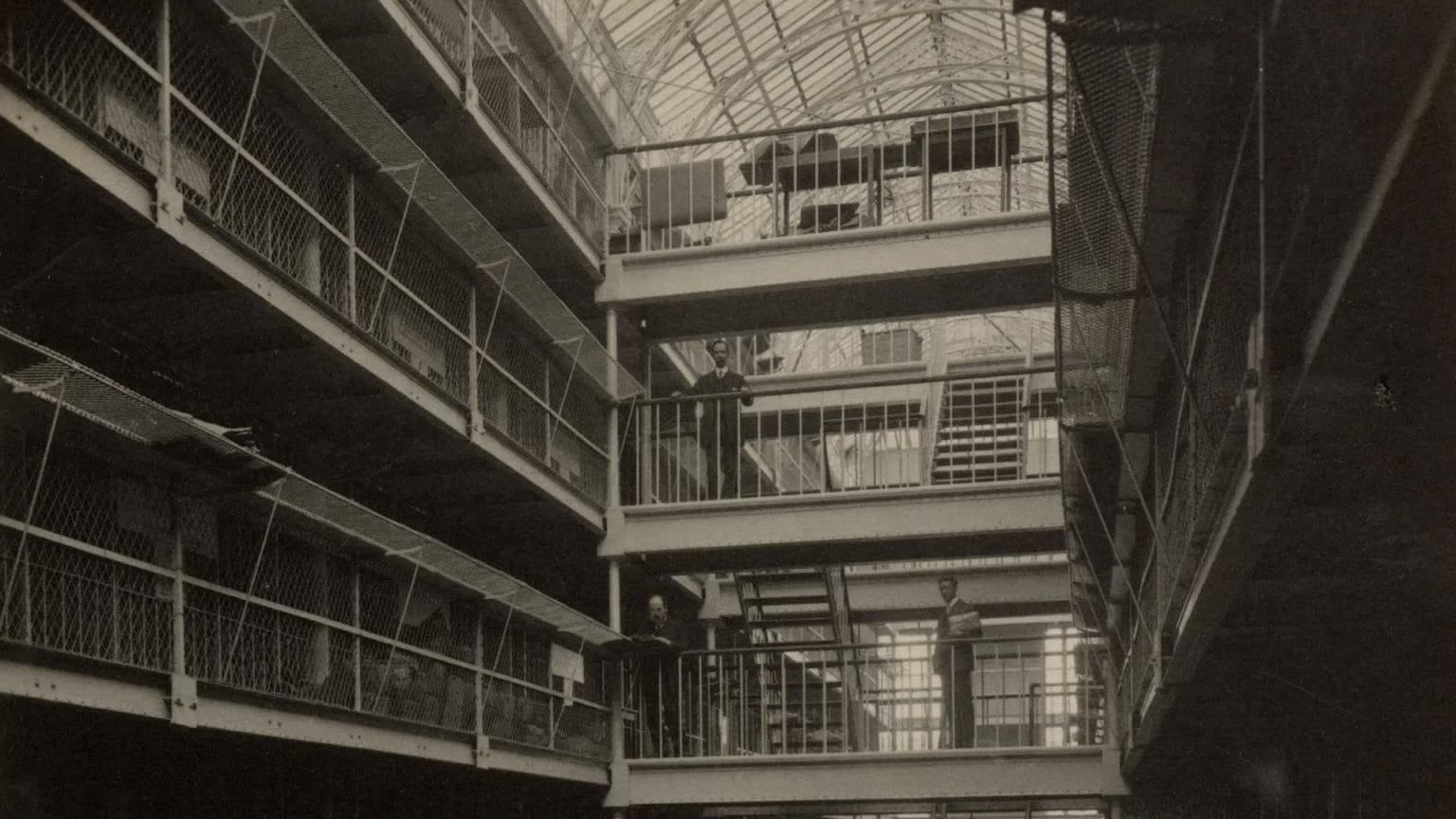This exhibition is presented by the National Archives of Ireland in partnership with the Irish Architectural Archive and tells the story of the once magnificent building that was the Public Record Office of Ireland; from its construction to its burning during the Battle of the Four Courts in June 1922 to its final reconstruction.
The Public Record Office was a highly innovative structure, carefully designed and purpose built to function as an archival repository. Built between 1864 and 1866, the Public Record Office consisted of a three-storey over-basement Record House with staff offices, a caretaker’s apartment, a library, a binding room and a public reading room. Behind the Record House was the Record Treasury, an enormous six-storey building containing 100,000 square feet of shelving with records accumulated over seven centuries.





